Cercarial Dermatitis, also known as swimmer’s itch, is an irritation that can occur after swimming in water that is infected by the Cercariae parasite. Every state in the United States, has reported swimmer’s itch. Water enthusiasts will find that most countries around the world have the same summertime issues, as the parasite can be present in fresh water, or salt water. Any swimmer can be infected, but children are particularly subject to swimmer’s itch because they play near the shore, and rarely towel dry after a swim.
What causes swimmers itch?
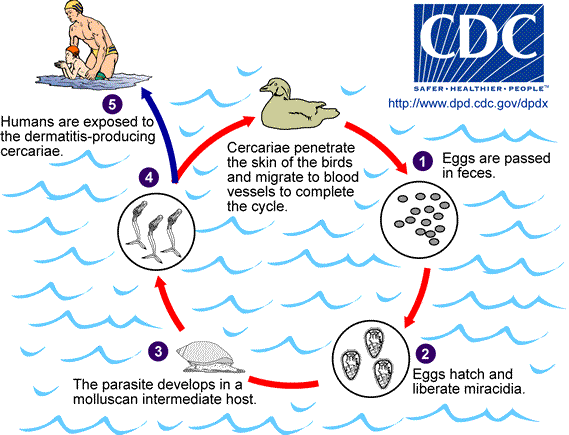
A parasite called a Cercariae swims around lakes, ponds, and rivers looking for a suitable host, such as birds, waterfowl, beavers, and muskrats to name a few. The Cercariae dwells and lays eggs in the host which in turns deposit the eggs back into the water or on-shore through their feces. Eggs that are washed into the water, will hatch and release a microscopic larva that will search for a certain type of mud snail. The larvae continues development within the snail which is then shed by the snail, into the water, as the final stage of Cercariae. The life cycle starts over with the Cercariae parasite searching for aquatic animals for a host. Humans are not the perfect host, but the parasite will enter the swimmer’s skin often causing an allergic reaction that causes a rash and an intense itch.
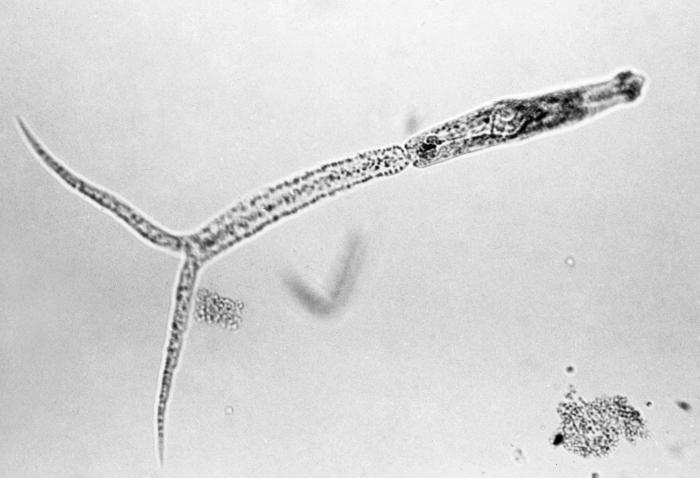
The good news is that the parasite doesn’t like human hosts and dies within 24 hours. The bad news is that some people are more sensitive and can have an allergic reaction that looks like small red, itchy pimples. The rash can last for several days to a week.
Swim Smart
I always remind Andrew to not swim in warm, murky water, such as trapped water on the shore, but rather to swim in deeper water. It is thought (but not proven) that sunscreen application might repel the parasite. Wearing sunscreen, is always a good habit so that is our first step before entering the water. We also stay away from shorelines that are over inhabited by birds.
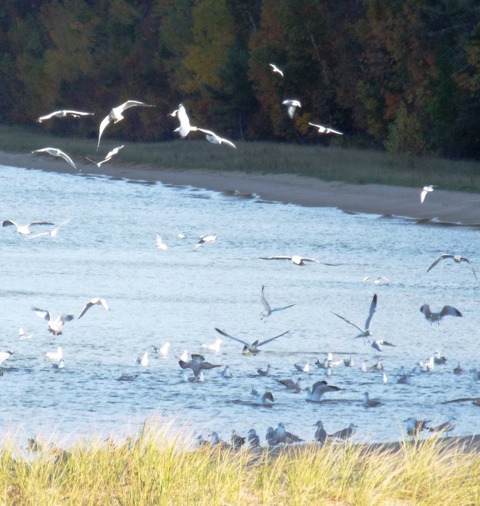
I prefer swimming in the Great Lakes, as opposed to inland lakes, because there is more water circulation and the water temperature is cooler. However when families travel with small children, swimming in deeper water is not practical. It is best to just be prepared to prevent swimmer’s itch.
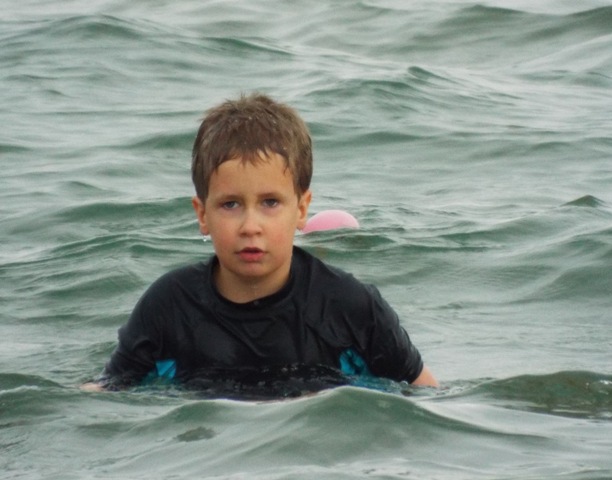
Preventing Swimmers Itch
Local residents will tell you to rinse with fresh water after a swim and then vigorously towel dry. Vigorously is the key word. Towel dry like you are purposely scrubbing the parasite away. Only exposed skin is susceptible to the parasite. I pack netted dish cloths purposely to be used as wash cloths. The netting adds extra scouring action. The shower is then followed by another vigorous towel drying session.
Swimmer’s Itch Issue
While vacationing in Michigan, Andrew had been swimming in Lake Huron and became infatuated with tubular plants along the shoreline. We should have showered and changed clothes, but instead we drove further north to go rock hunting. Within a few hours, Andrew was beginning to scratch and complain.
Our Itchy Fight!
We abandoned the rocky beach and headed back to the cabin to shower. This time, even after showing, the itch was still present and red spots were just beginning to show. I helped Andrew apply Witch Hazel to his legs and torso, followed by a Benadryl spray rub. After that step dried, I applied an Analgesic lotion. Thinking it was going to be a long night, I gave Andrew a dose of Benadryl before bedtime. I wasn’t sure if our steps were over-kill but Neither one of us wanted this parasite commandeering our vacation.
Close Call
Except for a few remaining red spots, the rash cleared overnight. I sprayed Benadryl on just the remaining areas, and thankfully, all remained well.
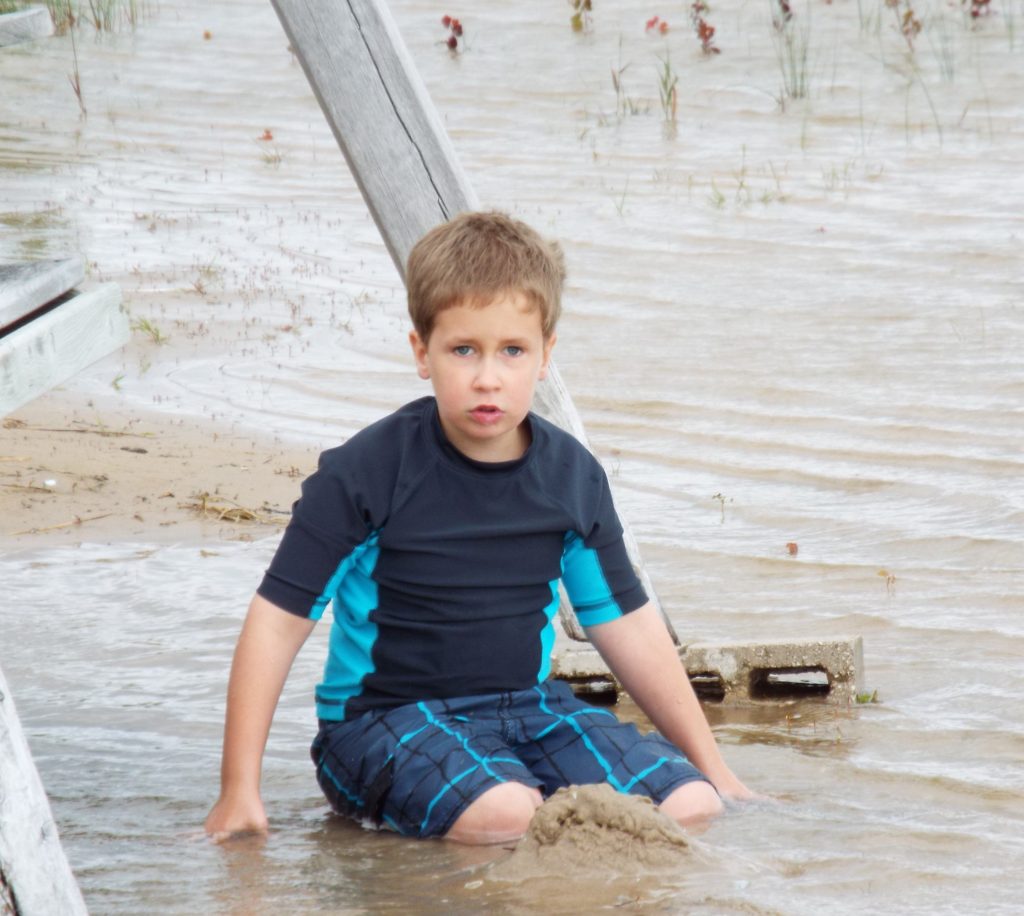
Avoiding infected waters
Since there is no way to tell if the Cercariae parasite is present, avoiding infected waters can be difficult. I have seen signs at a few inland lakes telling swimmers that the itch might be present. However, many local governments will not post that swimmer’s itch is present for fear of losing vacationers. I err on the side of caution, and assume it is always present.
Stay Prepared!
There is no reason to allow a tiny parasite to ruin this summer’s water activities. Following a few simple steps will save your family vacation. Avoid swimming where you see bird poo on the beach, use sunscreen, avoid marshy areas, warm stagnant water, and vigorously towel dry after a swim.
(This post contains affiliate links. If you click through and make a purchase, we will earn a commission, at no additional cost to you.)
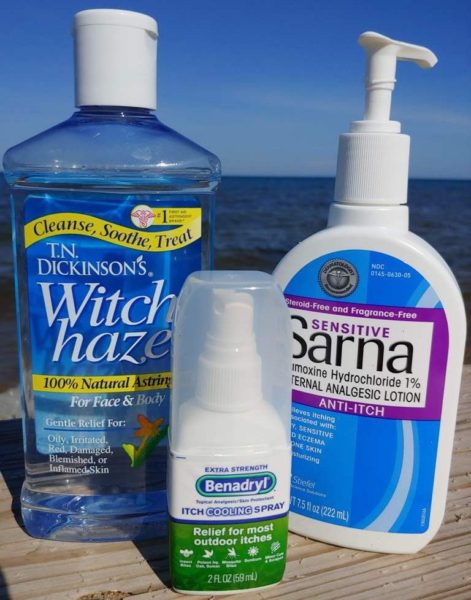
I treat every swim as if the parasite exists and always have an arsenal of supplies on hand. Attack the itch immediately with the following supplies. We provide the links to save you the hassle of the search.
Be Aware of the Dangers of Inflatables
You might also be interested in our horrific experience with an inflatable on open water. Read more here:







Dayna Hamm says
I didn’t know about either of these. Thank you!
Danielle Warmuth says
Your welcome! I hope we can help others either with Swimmer’s Itch or prevent the danger we faced with the inflatable.
Jill Hunter says
You always have useful information I never heard of swimmers itch Thanks for the info
Danielle Warmuth says
If you spend time in water – you will sooner or later!